Updated for 2025:
Discover the best Canon lenses for video and filmmaking, vlogging & the best EF and RF lenses for run-n-gun video. Find your perfect glass!”
Thinking about taking the dive into video with your Canon camera?
Here’s 5 Canon EF video lenses worth a look.
Whether you shoot wedding films or music videos, short films, wildlife, events, commercials, real estate or corporate there’s something here for every project and budget.
I’ve been shooting video for about eighteen years. First using an old school Canon Vixia camcorder; then in 2010 everything changed when I bought the EOS Rebel T2i and entered the world of DSLR video. I never looked back, eventually moving to a EOS 60D and then to the brilliant auto-focus equipped 70D, and to the full-frame mirrorless Canon EOS R5. Most recently I’ve been shooting Stark Insider videos and short film projects on the Panasonic Lumix GH6 with EF adapter and RED Dragon cameras.
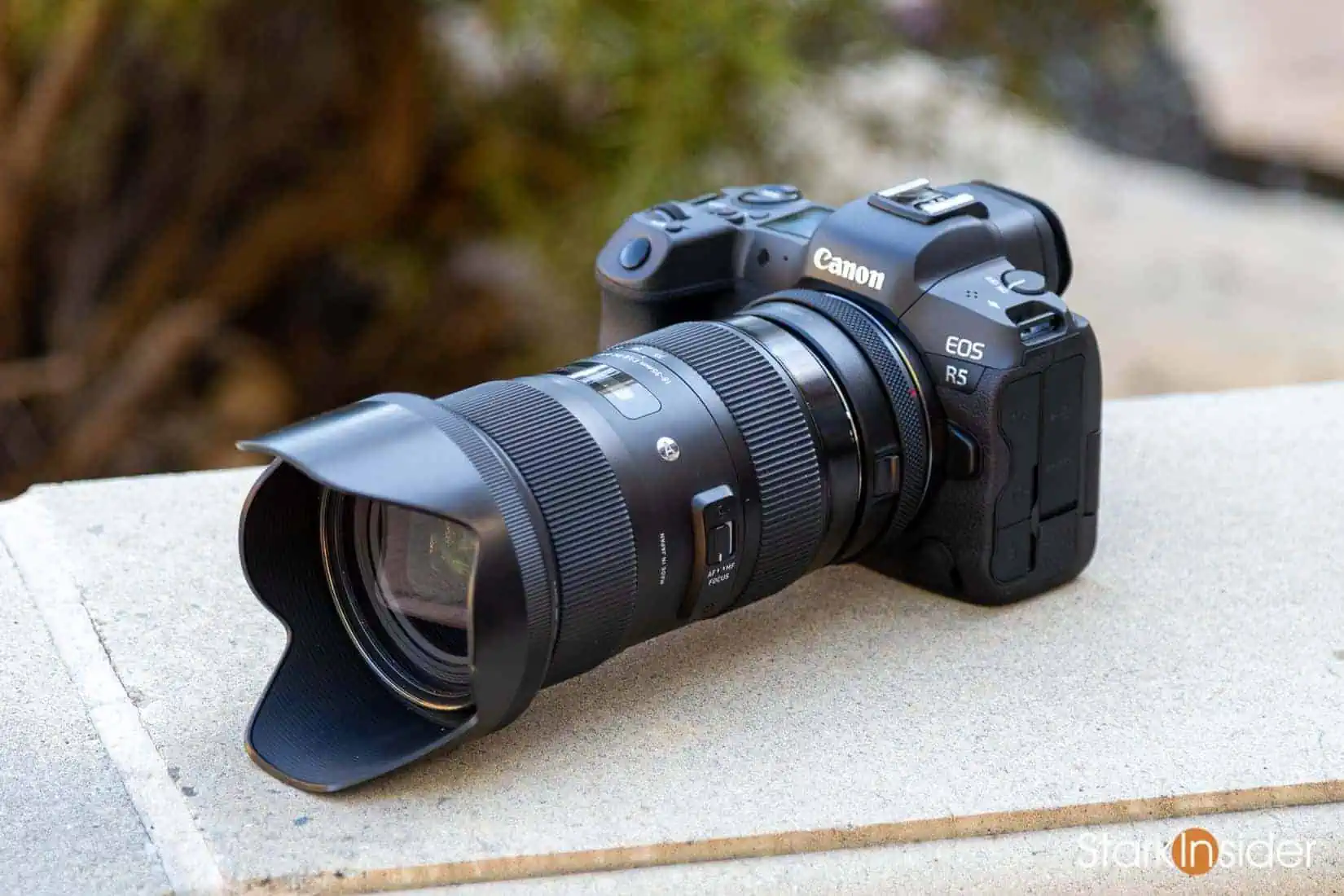
TL;DR:
If you want to buy one and only one lens,
get the Sigma 18-35mm f/1.8. No IS, so pair it with a gimbal or tripod, and add the Sigma 50-100mm for telephoto coverage.
Lenses can be confusing. There are many choices. Lots of types (telephoto, prime, macro, fisheye). And a seemingly endless array of manufacturers (Canon, Tamron, Sigma, Zeiss, etc.). One thing I’ve learned: a lens made primarily for taking photos may not necessarily be the best for video.
We found these lenses to consistently be some of the best performing when shooting video. If you own a newer Canon mirrorless like the EOS RP, R3, R5/R5C, R6, R7, R8 or R10 (Canon has been on a mirrorless bender of late!) rest assured you can use any of the RF lenses natively, of course, and the EF ones using an inexpensive EF to RF adapter. Basically, you get the best of both worlds and have a lot of choice.
Top 5: Best lenses for shooting video with a Canon DSLR or mirrorless camera
Canon EF 24–105mm f/4L is II USM
Canon EF 50mm f/1.8 II (The Nifty Fifty)
Rokinon Cine 85mm t/1.5 with De-Clicked Aperture
Sigma 18-35mm f/1.8 Art
Canon 10-18mm f/4.5-5.6 IS STM
And for mirrorless RF shooters here’s an excellent native option:
Image Stabilization
A quick tip:
If you’re getting into DSLR video for the first time I highly recommend you look for a lens with image stabilization. On Canon lenses that feature is usually denoted with “IS” in the model name. Without lens stabilization you’ll get what’s called “micro-jiggles” when shooting handheld. You can use a tripod or some form of rig to correct that issue, but if you’re like me, you’re doing run-n-gun and shooting documentary style… which leads me to this point…
“Best” ?
Declaring these particular lenses as “best” for DSLR or mirrorless video is a bit of a misnomer. Let me admit that right up front. There is no best really. It depends on how you’re planning to use the camera.
First establish up front what style of video you’ll be filming.
A narrative feature will have a script and storyboard. Scenes will be carefully constructed, blocked, lit. In this situation, prime lenses (those with fixed focal lengths) are usually the best as they offer the sharpest quality image. On the other hand if you’re shooting a documentary you may not necessarily know where your subject is going to move, so a stabilized telephoto on your shoulder may work best.
For Stark Insider, we shoot food & wine, backstage theater, experimental short films and sit-down interview videos. Again, mostly run-n-gun. I don’t have time to set-up scenes. We are often, if not always, time constrained. That means a flexible lens that works well in a variety of situations (also, I usually don’t have the luxury of being able to change lenses on the go, so I usually need a do-it-all).
Invest in Quality Glass When You Can
Some of the best lenses on the market, such as the “L” series from Canon, can cost thousands of dollars. Are they worth it?
Yes and no.
Keep in mind a good lens can last a lifetime. Invest in quality once (“buy once, cry once”), and you’ll be able to enjoy it for decades to come, moving it from one Canon body (or EF mount camera) to the next EF camera or even RF with an adapter. That doesn’t mean that you need to spend a fortune mind you. All of the lenses I use listed below are under $1,000 – and, yet, the results can be perfectly acceptable, even at times amazing. Again, it comes down to goals. If you’re planning to project 4K at a movie theater, well then you’re probably already renting Cine Primes or something like that. On the other hand if you’re like me you’re primarily delivering at 1080p or 4K for the web (YouTube, Vimeo, Facebook, Instagram and other social media), and don’t necessarily need a $25,000 lens to get decent results and viewers watching.
In the End the Storytelling Matters Most
I admit it. I get caught up too in the hoopla. Panasonic GH4! Sony a7 4K mirrorless cameras! Canon EOS R5! Wow! Wow! Wow!
Search YouTube and you’ll find endless comparisons for cameras and lenses. Cats. Flowers. Buildings. How great it is to test new gear, or, better still, watch someone else test new gear? Gonzo!
I love all that stuff… but my advice is not to get too fixated with all the infatuating minutia. Get out there and shoot! Practice. Learn from your mistakes. Refine your style. Instead of searching for the latest comparison watch some tutorials on composition, editing, and using the camera to create a visual narrative. I’m not quite there yet, really. I cringe at my early work, and I cringe often at my recent work — so many mistakes. Just keep in mind a lens, a camera… or any piece of gear for that matter, will only get you so far. A great idea with plenty of creative spark could turn out beautifully when shot on just, say, an iPad or iPhone. After all, compelling storytelling is about grabbing our attention, stoking our imagination, and then engaging a variety of human emotion. No lens alone, no matter how sharp, can do that. That’s our job, as visual storytellers.
Okay, then, onto the gear. I’ve listed these in the order that I’d recommend to someone building out a collection of lenses from scratch. If you had all these in your bag I dare say I think you’d be well equipped for just about anything (Zombie apocalypse excluded).
5 Best Lenses for Shooting Video with a Canon Camera
Canon EF 24–105mm f/4 L is II USM Lens
A great all-rounder. New to video, and want to buy just one lens to get started? This Canon lens is the one. With Canon’s “Dual Pixel” AF you can touch the LCD of your Canon and the camera will automatically focus and track a subject, even as it moves — just like a camcorder. It works brilliantly. Canon regularly updates this lens and this is the latest version with USM (Ultrasonic Motor) for super quiet focusing. That’s great, because with this lens you don’t have to worry about the camera’s microphone picking up unwanted sounds. I’ve been shooting most recent Stark Insider videos using this one, and it’s never let me down. Keep in mind this lens is best for scenes with good lighting or outdoors.
Most of this video Wrong’s What I Do Best was shot using the 24-105mm (for a couple of the shots of San Francisco I used the Sigma mentioned below and also an 18-135mm for some wide shots).
VIDEO EXAMPLE: Canon 24-105mm STM Lens
Wrong’s What I Do Best – San Francisco Art Institute from Stark Insider on Vimeo.
The “Nifty Fifty” – Canon EF 50mm f/1.8 II Lens
Canon makes three 50mm lenses. I like the cheapest Nifty-Fifty the best. At only $110 this is an amazing deal. For that you get quality glass that belies its price that works wonders in low light thanks to its speed (f/1.8). IS is absent so you’ll need a (very) steady hand or (preferred) a rig. Still, I’ve managed to capture filmic like footage handheld with this beauty. Thanks to its glorious bokeh (the unfocused area of the frame) you might just be blown away by the results. The craziest lens deal of all time!
Rokinon 85mm t/1.5 Cine Lens for Canon with De-Clicked Aperture
If you have the first two lenses I mention above you’re off to a good start. Want to get fancier without breaking the bank? Try this Rokinon.
This Rokinon is a “Cine” lens for Canon (with other mounts available) which in this case means the aperture has been “de-clicked” — instead of adjusting the f-stop using the camera controls, you’ll adjust it by rotating the ring on the lens. Obviously don’t buy this lens first, it takes practice. Everything is manual. So it’s not ideal for run-n-gun. I still carry it with me when I have a few extra minutes, especially at night. I can dial in a cinematic scene and the results are often spectacular.
Keep in mind many Canon cameras feature a APS-C sensor, meaning they are not full frame (like the Canon EOS R5). The crop-factor is about 1.6x. Meaning this lens will in fact result in a shot that is more like ~ 130mm. I like this one for filming people from a distance. Again, that filmic look!
Sigma 18-35mm f/1.8 Art Lens
Sigma set the camera world ablaze with this lens. All you could hear anyone talk about in recent years, especially those into video, was that Sigma lens… and its incredible sharpness and overall performance (rivaling that of glass costing two- to three-times as much). Many even suggest that because this lens is so good that it is in essence three primes in one: 18, 24, and 35mm. In fact that’s exactly how I treat it. With the above mentioned three lenses I’m covered for image stabilized zoom from 18-105mm, have a sharp 50mm, and cinema 85mm for artistic stuff. This Sigma give me wider angles and superb low-light performance (f/1.8). An instant classic.
Again, no image stabilization. Keep that in mind.
Still, I shot this artsy (okay, quirky) short A GIFT FROM ME TO YOU video on the Sigma 18-35mm handheld, using modest warp stabilizer here and there in Adobe Premiere Pro.
VIDEO EXAMPLE: A Gift From Me To You
Sigma 18-35mm Art Lens
Canon 10-18mm f/4.5-5.6 IS STM Lens
For wide shots, Vlogging, and wildlife here’s a solid, low cost Canon option. I have not tested it. But I’m adding it to the list because it’s (a) only $300; (b) features STM meaning it will focus without noise and pairs well with Canon camera bodies; and (c) should provide for nice wide angle shots. It has IS so it will be suitable for handheld work. It’s not a fast lens (f4.5-5.6) so I’d avoid low light shoots.
5 Lenses to Rule the World
… and scene!
With these 5 lenses in your bag or studio, you’re pretty much set for anything. The 24-105mm with USM is a perfect all-rounder, ready for just about any occasion, easy to use and almost silent.
If I want to get some filmic looks I’ll swap it out for the Canon 50mm or (if I have extra time) the Rokinon 85mm.
In low light I’ll switch to the amazing Sigma 18-35mm and zoom… using my feet!
Finally for wide angles I’d use the new Canon 10-18mm STM – I could see this coming in handy, say, for sweeping shots of Napa, San Francisco and in and around Silicon Valley where Stark Insider is based.
What about L Glass?
Aside from the RF and EF 24-105mm I didn’t recommend other Canon’s premium EF L glass. If you have the budget I’d consider swapping out my #1 lens with a Canon 24-70mm f/2.8 L (available in EF and RF mounts). It’s a staple of the professional trade. With a pro price to match: $2,399. Is it worth it? If you’re just getting started with video I’d say probably not — there’s too much to learn first, and besides you can get great results from the lenses I mention above. If you’re a pro, then you likely already own this lens (or rent it). It’s a classic. Phenomenal performance. Again, remember, “best lens” is a very subjective topic.
Frequently Asked Questions
What should I consider when shopping for a video lens?
When hunting for the best video lens for DSLR or mirrorless cameras, evaluate your focal length needs (wide-angle vs telephoto), maximum aperture (low F-stop for cinematic depth of field), optical image stabilization (IS) for run-and-gun filming or YouTube vlogging, autofocus performance and noise, robust build quality and weather-sealing, mount compatibility (EF, RF, PL) plus sensor size (full-frame vs APS-C), and overall weight, size, and budget.
Why is F-stop so important for cinematic filmmaking and YouTube content?
The F-stop (aperture) dictates how much light hits your sensor and controls depth of field. Low F-stop values (f/1.4, f/1.8, f/2.8) deliver creamier bokeh and superior low-light performance—key for that filmic, professional look—while higher F-stops expand depth of field for run-and-gun or interview videos in bright conditions.
How does build quality impact video lens performance?
Premium metal construction and tight tolerances resist focus creep, reduce flex, and often include dust/moisture seals—critical for reliable cinema lenses on location. Durable focus and aperture rings give smooth, repeatable control for manual pulling and ensure your gear survives long shoots.
What do I need to know about lens mount compatibility?
Match lens mount (EF, RF, PL, E-mount) to your camera body or use high-quality adapters (EF→RF, PL→EF) with minimal focus shift. Also check mount support for full-frame vs APS-C sensors to avoid unwanted crop factors in your DSLR or mirrorless video workflow.
Do I really need image stabilization in my lens for video?
If you’re shooting handheld or run-and-gun vlogging on YouTube, optical IS (or in-body IBIS) smooths out micro-jiggles and handshake. For gimbal or tripod work you can skip lens IS, but for fast-paced cinema shorts or travel vlogs, stabilization is a game changer.
Should I choose prime or zoom lenses for video production?
Zoom lenses (e.g. 24–105mm, 10–18mm) offer versatility and faster setups for documentary-style shoots, while prime lenses (50mm, 85mm, 18–35mm f/1.8 Art) deliver sharper images, faster apertures, less focus breathing, and more cinematic character—ideal when you have time to plan shots.
What’s the difference between cine lenses and photo lenses for film-style videos?
Cine lenses feature de-clicked apertures, geared focus rings, consistent T-stop markings, and minimal focus breathing—built for smooth pulls and repeatable setups. Photo lenses can work, but often lack stepless iris control and the tactile precision cinematic productions demand.
How do I pick the right focal length for my genre?
Wide-angle (10–24mm) suits real-estate and run-and-gun vlogs; standard zooms (24–70mm, 18–35mm) excel for weddings and short films; telephoto primes (50mm, 85mm, 100–400mm) shine in interviews, wildlife, or cinematic close-ups. Match lens range to your storytelling style.
How much does lens weight and size matter for video shooters?
Heavy cinema glass delivers pro-grade optics but can tire you out on handheld rigs—consider compact mirrorless RF lenses for run-and-gun YouTube vlogging or travel shoots. Balance image quality vs portability to stay nimble on set.
Parting Thought:
The Beauty of the EF and RF Mounts
Five of these lenses I’m recommending above use Canon’s EF mount, with the bonus choice being RF. I love these mounts.
Among videographers and filmmakers the EF mount has become an industry standard (much like PL for high end work) — and now the RF mount is making quick inroads. That means if you decide to take the leap and invest in a cinema camera body, such as a lovely Blackmagic Cinema Camera or superb Canon EOS Cinema series (C100/300/500) or a RED Komodo-X you’ll be able to use all your existing Canon glass. That’s a great way to protect your investments.
Better still, there’s readily available RF to EF adapters so you can continue to leverage your older glass on newer Canon camera bodies.
Clinton Stark’s 5 best lenses for shooting video with a Canon DSLR or mirrorless camera
Canon EF 24–105mm f/4L IS II USM
The “Nifty Fifty” – Canon EF 50mm f/1.8 II
Rokinon Cine 85mm t/1.5 with De-Clicked Aperture
Sigma 18-35mm f/1.8 DC HSM L
Canon 10-18mm f/4.5-5.6 IS STM
Bonus option for RF mount:
And finally, above all else: have fun using these Canon EF and cine lenses for shooting video with your Canon DSLR or mirrorless camera. It can be challenging at times, but in my experience the learning and effort pays dividends and is a rewarding process!


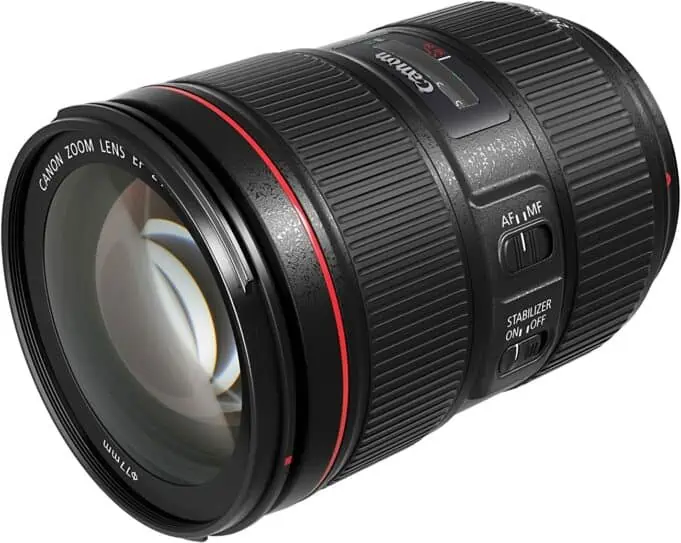
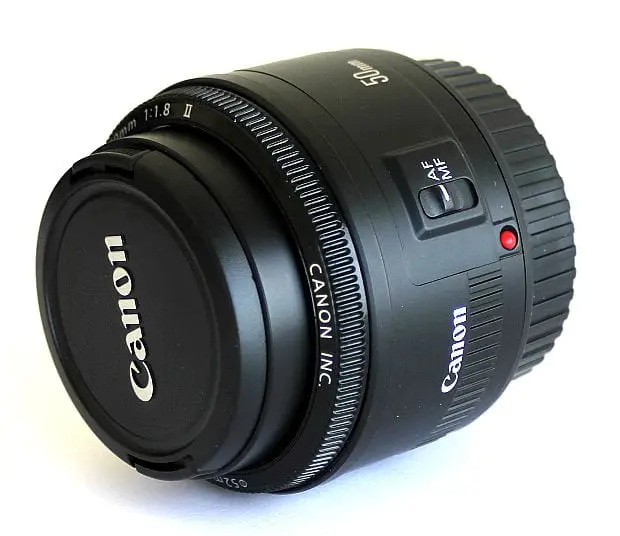

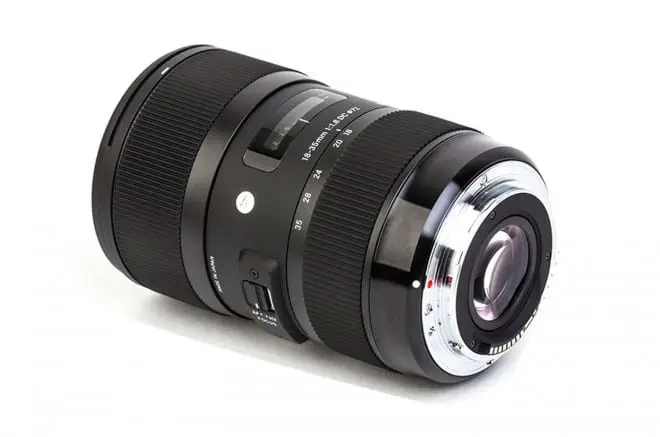
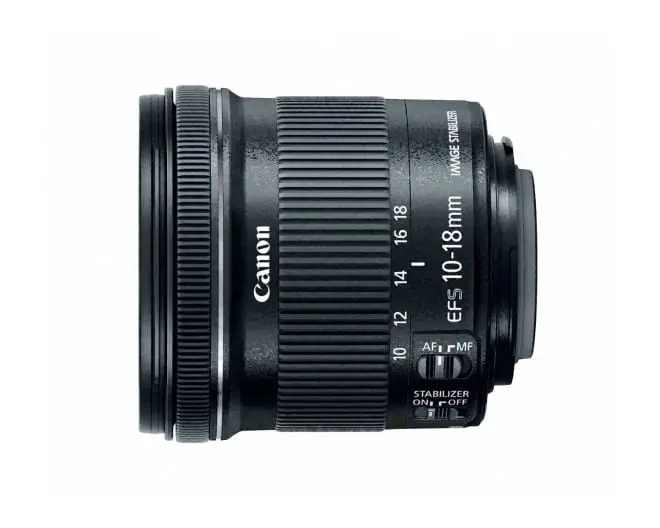
 Clinton Stark’s 5 best lenses for shooting video with a Canon DSLR or mirrorless camera
Clinton Stark’s 5 best lenses for shooting video with a Canon DSLR or mirrorless camera